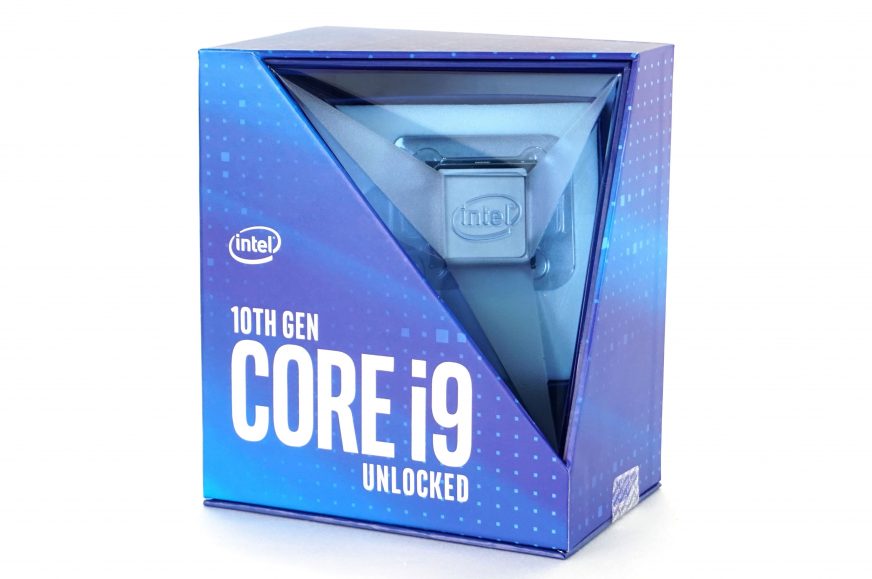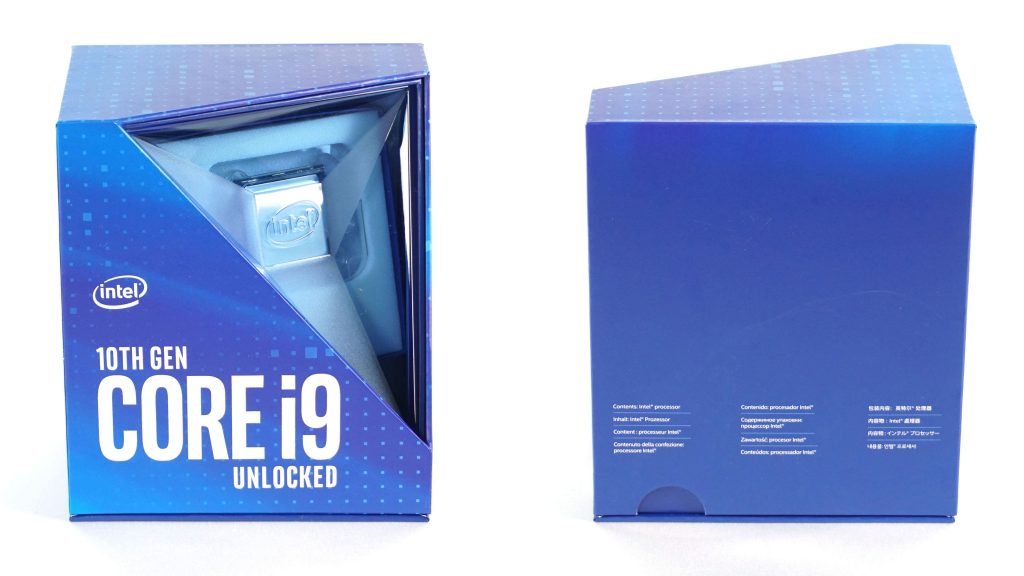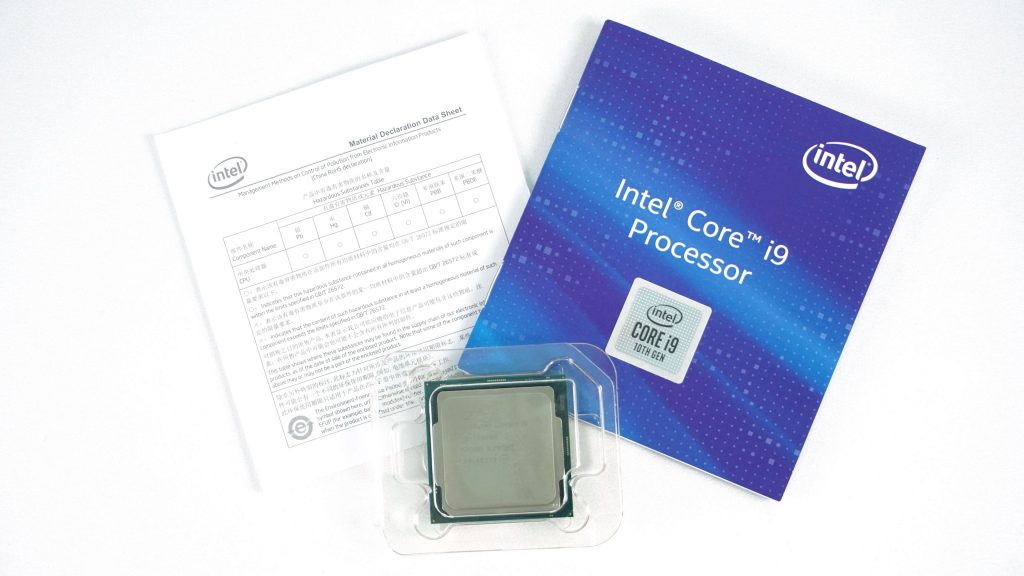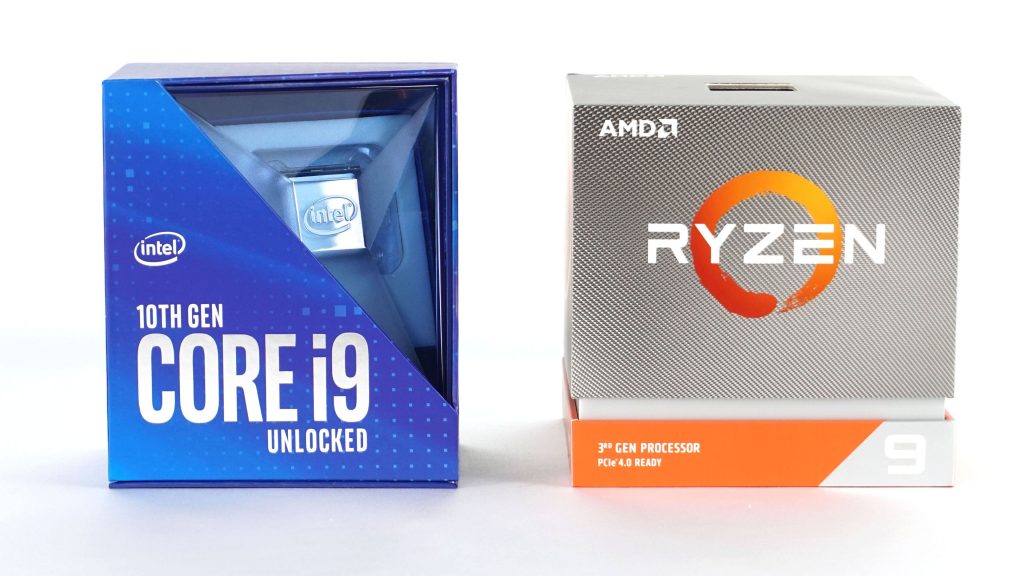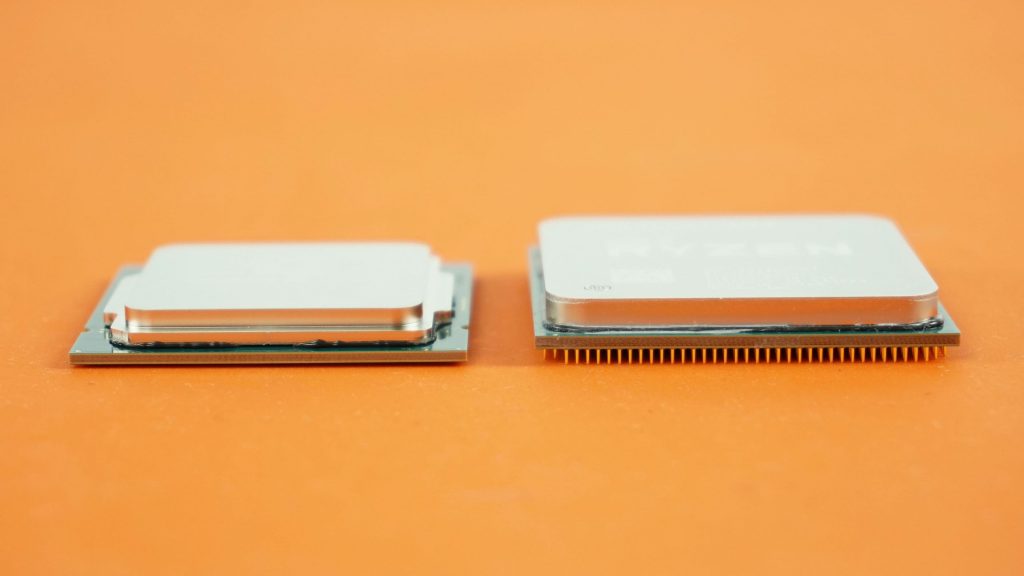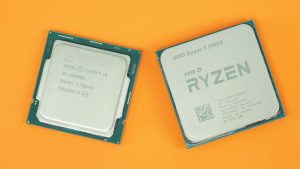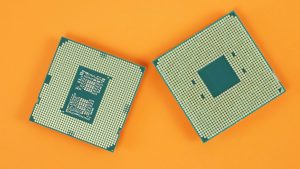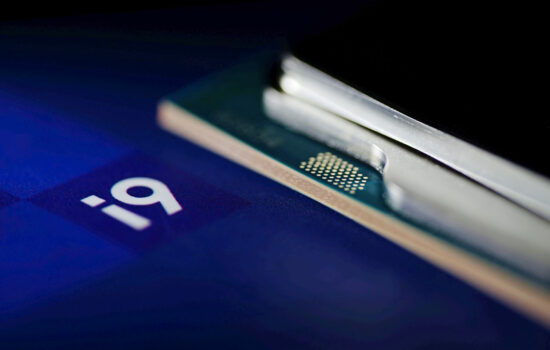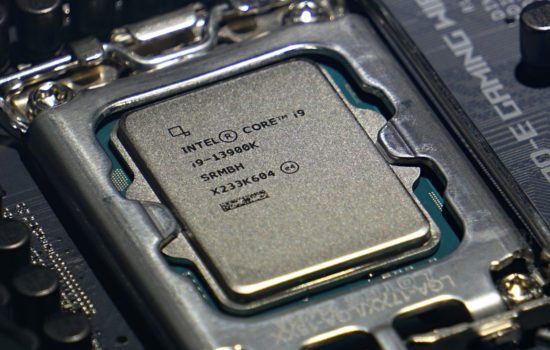10th generation, 10 cores
The 10th generation of Intel Core processors, called Comet Lake-S, is the latest iteration of Skylake and, unlike the mobile Ice Lake, is still 14 nm. However, this constant tuning of this manufacturing process has resulted in record frequencies that are specifically related to the most powerful processor currently in the LGA 1200 socket. Now the only question is whether this will be enough for the Ryzen 9 3900X.
10th generation, 10 cores
The highest model of the 10th generation is, of course, the Core i9 with the designation 10900K. It follows on from last year’s 9900K to which it adds two cores and four extra threads, a higher 125 W TDP, native support for 2933 MHz memory and several new technologies. Practically, this is just another iteration that does not bring anything surprising. That is, except for the new LGA 1200 socket which is not backward compatible. Again, Intel did what we’re used to and you will also need a new motherboard with Intel Z490 chipset for the new processor. The manufacturer’s justification is that Z490 boards will also support the upcoming Rocket Lake processors which will already use, at least in part, a manufacturing process lower than 14 nm, but above all also PCIe 4.0. Finding PCIe 4.0 support on the new Z490 motherboards is not a problem but don’t be fooled, the 10th generation of processors does not yet support PCIe 4.0. You will practically pay for something you can’t use yet.
Among the changes that we as users can take advantage of almost immediately is support for 2.5 Gb/s LAN and new WiFi 6 (which AMD has had for a year). Other changes have taken place and include new technologies for clock management. You certainly know the terms base clock and Turbo Boost. Turbo Boost has received a new version with the Max 3.0 attribute which complements the existing Turbo Boost 2.0. The maximum frequency of one or more cores is still distinguished and TBM 3.0 increases clock speed of the “favored” core. There is also always a time window in which the maximum clock speeds are reached.
In addition to the new Turbo Boost, the Thermal Velocity Boost is new, too, which also deals with clock speed of the favored core if its temperature is below a certain limit, in this case 70 degrees Celsius. TVB also works for all cores on the same principle. In practice, you get up to 6 frequencies to the processor which, in my opinion, is confusing and users can easily get lost in it. The base frequency is 3.7 GHz, Turbo 2.0 5.1 single core and 4.8 GHz on all cores. TB3 for the favored core is 5.2 GHz and if you include TVB, you will get 5.3 on one and 4.9 GHz for all cores. Where are the times when we had only two frequency values to the processor?
The design of the package has changed again compared to the previous generation, but you will still not find a cooler in the package. There is only documentation and the processor itself.
Basic specs and comparison
| Parameters | AMD Ryzen 9 3900X | Intel Core i9-10900K | |
| Processor cores | Patice | 12 | 10 |
| Processor threads | 24 | 20 | |
| Base frequency | 3800 MHz | 3700 MHz | |
| Precision/Turbo Boost frequency | Napájecí kaskáda procesoru | 4600 MHz | 5300/4900 MHz |
| Supported RAM freqency | Maximální frekvence RAM | 3200 MHz | 2933 MHz |
| Memory channles | 2 | 2 | |
| Intedrated graphics adapter | Diskové konektory | no | yes (Intel UHD 630) |
| L1 Cache | 4-pinové konektory PWM | 768 KiB | 640 KiB |
| L2 Cache | Interní porty USB | 6 MiB | 2,5 MiB |
| L3 Cache | RGB konektory | 64 MiB | 20 MiB |
| TDP | 105 W | 125 W | |
| Cooler | AMD Wraith Prism RGB | no | |
| Lithography | 7 nm FinFET (TSMC) | 14 nm | |
| Version of PCI Express (and lines) | Externí porty USB | 4.0 (16 + 4) | 3.0 (16) |
| Socket | AMD AM4 (PGA 1331) | Intel FCLGA1200 | |
| Overclocking | yes | yes | |
| Price incl. VAT (czc.cz) | Prodejní cena | 11 990 CZK/450 EUR | 14 681 CZK/550 EUR |
We will compare the new i9 with Ryzen 9 3900X which is the closest in terms of price and targeting. It offers more cores and threads, supports higher base memory clock speed. AMD also offers more Cache memory, lower TDP, a newer manufacturing process, PCIe 4.0, and is backward compatible with older motherboards. On the contrary, it does not have such high clock speed in Turbo and does not include integrated GPU that could be used for HW acceleration and possibly also basic use when replacing/upgrading a graphics card or as a backup of a malfunctioning dedicated graphics card. Both processors have unlocked multipliers for overclocking.
The packages are similar, with the difference that AMD also offers a box cooler that really comes to use. You won’t get great OC results with it, but it’s enough for normal gaming/work use. With Intel, buying a cooler is a must.
The main difference between the processors is also the type of socket. While Intel uses LGA, pins on the motherboard, AMD is loyal to PGA with pins on the processor. Each of these types has its advantages and disadvantages and it is not possible to determine exactly which one “is better”. When handling the AMD processor, you need to be more careful not to drop it, on the contrary, you need to pay more attention to motherboards with Intel. Once you bend a pin, it is easier to fix on the processor than on the motherboard. However, AMD has a certain ailment, namely the possibility to pull the processor out of the socket together with the cooler when you try to remove it. It is therefore a good idea to warm the processor a little before removing the cooler to make the thermal paste softer.
Testing methodology
We tested the processors at home, not in a laboratory environment. Nevertheless, the effort was made for the most accurate results. These are therefore the average of the measured values from repeated tests. We tried to eliminate factors that would affect performance in addition to the processor itself and the motherboard. We used the same components in both cases. The idea of all tests was to use base settings and turning on XMP, no other adjustments were made. This is how most users will actually function.
| Test setup | ||
| Processor | AMD Ryzen 9 3900X | Intel Core i9-10900K |
| Motherboard | Gigabyte X570 Aorus Xtreme | Gigabyte Z490 Aorus Xtreme |
| CPU cooler | Fractal Design Celsius S36 | |
| Thermal compound | Noctua NT-H1 | |
| RAM | Corsair Dominator Platinum RGB, 2× 8 GB, 3600 MHz/CL16 | |
| Graphics card | Gigabyte Aorus RTX 2080 Ti Xtreme OC 11 G | Gigabyte Aorus RTX 2080 Ti Xtreme OC 11 G |
| SSD | Gigabyte Aorus PCIe 4.0 NVMe SSD 2 TB | Adata XPG Gammix S11 Pro 1 TB |
| Power supply | SeaSonic Prime 1300 W (80Plus Gold) | |
| PC case | Lian Li PC-T70 |
- Contents
- 10th generation, 10 cores
- Rendering and Geekbench
- Gaming, graphics tests and PC/3DMark
- Encryption, encoding and memory tests
- Heating and power draw
- Rating





